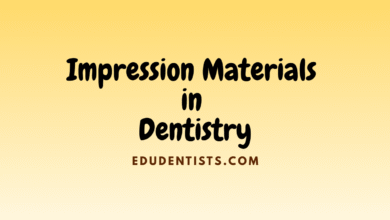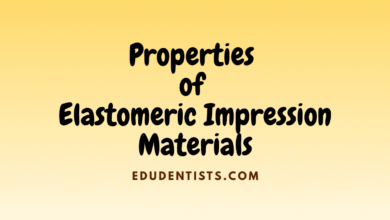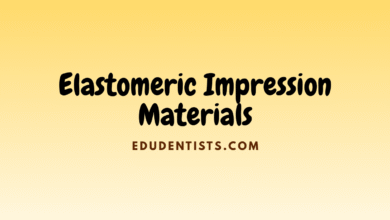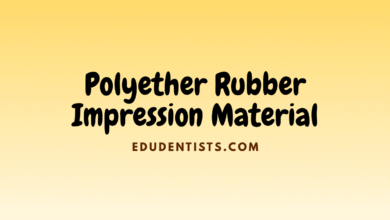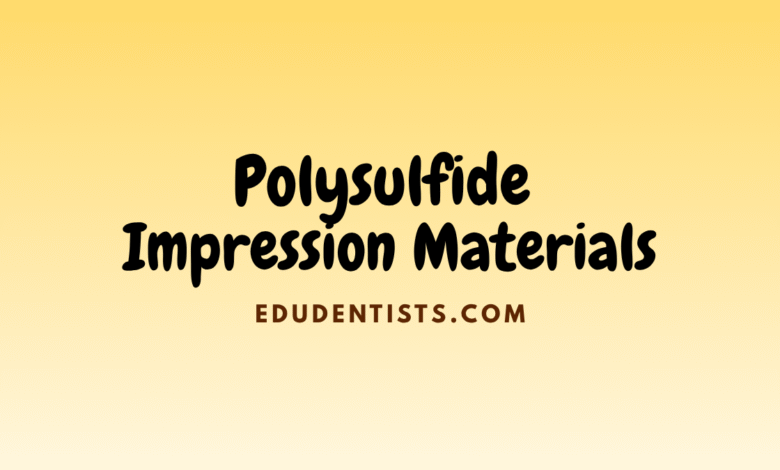
Polysulfide Impression Materials
Polysulfide Impression Materials
Overview
- First elastomeric material (introduced in 1950)
- Also known as Mercaptan or Thiokol
Packaging
- Two-paste system in collapsible tubes
- Base: white
- Accelerator: brown or gray
- Available in: light, medium, and heavy body

Commercial Names
- Permlastic (Kerr)
- Coe-flex (lead dioxide system)
- Omni-flex (copper hydroxide system)
Composition
- Base Paste:
- Polysulfide polymer: 80–85%
- Fillers: titanium dioxide, zinc sulfate, copper carbonate, silica
- Accelerator Paste:
- Lead dioxide: 60–68%
- Dibutyl phthalate: 30–35%
- Sulfur: ~3%
- Magnesium stearate and deodorants
Tray Adhesive
- Made from butyl rubber or styrene-acrylonitrile dissolved in chloroform or ketones.
Setting Reaction
- Exothermic reaction (~3–4°C rise)
- Reaction involves oxidation and cross-linking of SH groups in the polymer
Properties
- Unpleasant odor, stains, and messy handling
- Very viscous and sticky, difficult to mix (pseudoplastic behavior)
- Long setting time: 12.5–16 minutes
- Excellent surface detail
- High shrinkage (0.45%), high deformation (3–5%)
- High tear strength (4000 g/cm)
- Good flexibility (7%), needs 2 mm tray spacing
- Hydrophobic, sensitive to moisture during impression and pouring
- Electroplatable
- Shelf life: Good (~2 years)
Manipulation of Polysulfide Impression Materials
Paste Form
- Equal lengths of base and accelerator are dispensed side-by-side on a waxed mixing pad.
- Mixing is performed with a stiff tapered spatula for around 45 seconds.
- A thin layer of material should be spread before loading into the tray to help release trapped air.
Note: Polysulfide materials are sensitive to humidity and have a longer setting time than other materials, requiring care during handling and removal.

